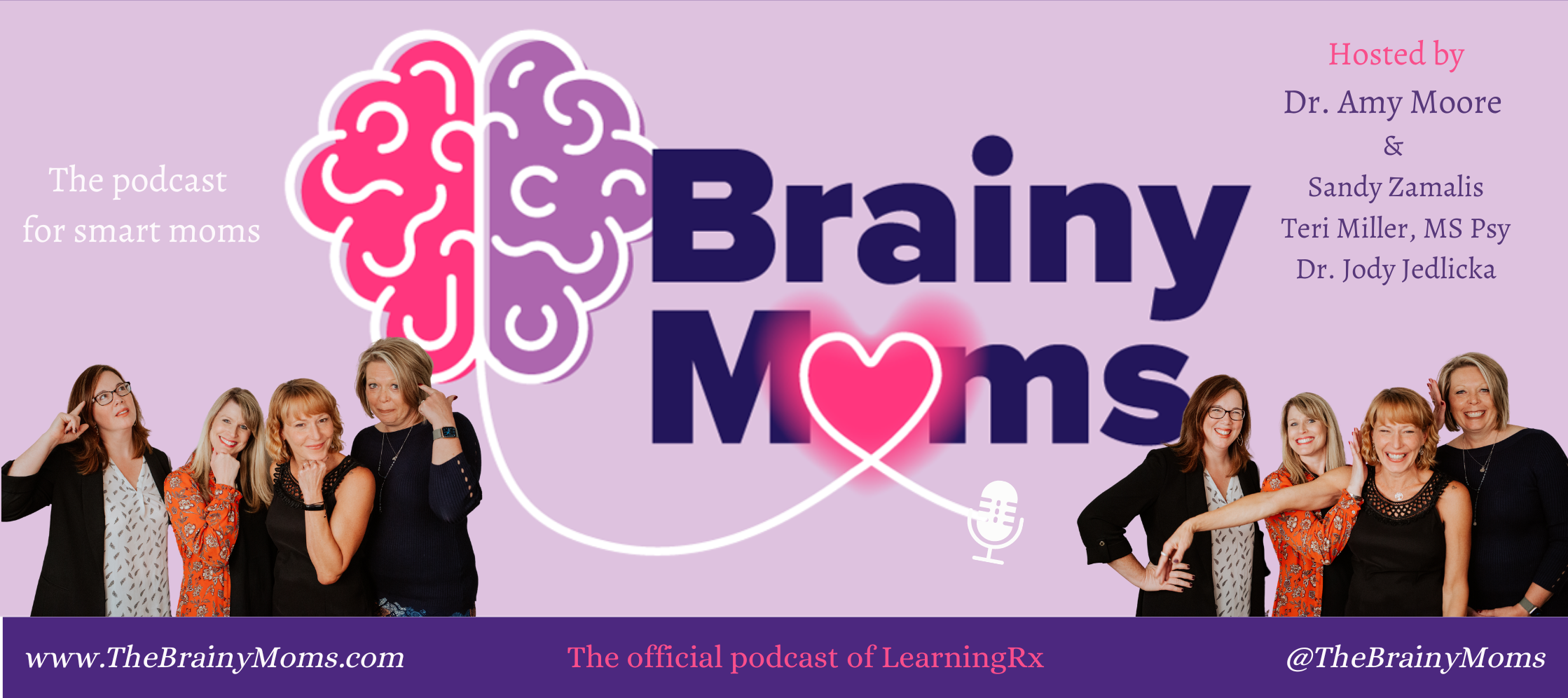If you’ve been through potty training with your kids, you’ve probably been given advice from well-meaning parents, grandparents, friends, and even strangers. But just because a technique (or bribe!) worked for one kiddo doesn’t mean it will work for all of them. So we thought we’d bring in an expert—someone who has not only potty trained her own children, but helped other parents with the process—to share her insights with our listeners on The Brainy Moms podcast.
Enter Mary Vaughn.
Beyond the basics of “Bribe them with candy!” and “Let them walk around bottomless,” Mary shared so much relevant and helpful information regarding potty training that we brought her back to create a two-part series! (And no, it’s not a coincidence that the aptly named “No 2” episode was almost entirely focused on poop!)
So what did we learn? A lot! Here are some of the best take-aways from our two-part potty training podcast series with guest Mary Vaughn.
1. At what age should I start potty training?
“Of the signs you’re looking for, the least important one is age,” explained Vaughn, “and that might surprise people. People are looking for a number. In general, 18 months is kind of the low end and if you start to hit older than three, then you may have missed a really opportune window. But there is no magic number.”
2. What are the 5 signs your child is ready to start potty training?
According to Vaughn, there 5 criteria that can help most parents determine if their child is ready to begin the potty-training process. They include:
- They’re at least 18 months old.
- They’re interested in using the potty.
- They can “hold it” for at least two hours.
- They understand and can use “potty lingo.”
- They can “tell” you when they need to go to the bathroom. (Not necessarily verbal!)
3. What physical changes play a role in potty training and bedwetting?
According to Vaughn, a child’s bladder doubles in volume between the ages of 2 and 4. In addition, nighttime dryness is affected by the production of antidiuretic hormone (ADH), a chemical produced in the brain that causes the kidneys to release less water, decreasing the amount of urine produced. “Every pediatrician I’ve ever spoken to on the topic has said that it’s normal to continue to have overnight accidents well into the elementary school years,” explained Vaughn. “Even at ages 8 and 9, [doctors] don’t get concerned about nighttime incontinence.”
4. What types of non-verbal communication can indicate that a child has to go to the bathroom?
“Communication can be like the ‘potty dance,” crossing the legs, or a lot of kids will go behind the couch or a curtain—hiding kind of in the same spot every time they need to go to the bathroom,” explained Vaugh. “Interestingly, the signs of readiness are the same for neurotypical kids and kids with developmental delays because the communication doesn’t have to be verbal.”
5. What kinds of things can parents do to help little ones with anxiety or sensory issues around potty training?
“Making sure they feel secure in the bathroom is part of it,” said Vaughn. “Making sure that they feel very safe on the toilet and there’s no concern about falling it. It might be a little bit softer than the regular chair. It might not be so cold and hard. And having a stool for them so that their feet are planted and they feel safe.”
6. What are some of the reasons kids have mid-training poop accidents in their “pants”?
“For a lot of kids, it’s just an anxiety thing, where for two or three years of your life, you’ve pooped in the safety of your diaper. To go from that to having to release what they feel like is part of their little bodies is really stressful and it’s something they’ve done rather privately.”
Constipation, too, can play a role during potty training.
“So, if it’s not a generalized anxiety issue, which is really common, we see a lot of kids who, while they’re potty training, are inclined to hold it,” Vaughn explained. “This can quickly lead to constipation, which can lead to uncomfortable pooping. And as soon as your kid has one painful experience … then they have to overcome a real fear of pain.”
Vaughn added that if a child is truly constipated, one of the effects is that they may have more poop accidents because they’re backed up. “Then what is getting through is kind of loose stool.” And while parents may think that their child is pooping so they’re doing ok, they may not be. “They may actually just be compounding this really, really hard stool and it’s just forming a blockage inside of them.”
7. What things can parents do to prevent constipation during potty training?
“Fluids and fiber,” explained Vaughn. “Smoothies are a great way to push both those things simultaneously.”
Vaughn also says that for kids with real anxiety about pooping in the potty, it’s sometimes better to give them a break from it. “Especially if it was related to pain or they had some uncomfortable experiences, I will tell [the parents] that they can take a breather from potty training and keep their kid having successful bowel movements, even if it’s in a diaper for a little while to let them overcome the fear and kind of relax back into knowing that they can pass a stool without pain before they resume trying to get their kid on the toilet. “
More Potty Training Resources:
To learn more about Mary Vaughn’s services as a certified PCI Parent Coach©, sleep consultant, and potty training coach, visit www.mothertogether.com.
Listen to Mary Vaughn’s two-part guest appearance on potty training on The Brainy Moms:
